Hyundai Tucson vs SsangYong Rexton – Differences & prices compared
Both models have their strengths – but which one suits you more?
Compare performance, efficiency, price and space directly: Hyundai Tucson or SsangYong Rexton?
Here’s where it gets real: The technical differences in detail
Costs and Efficiency: When it comes to price and running costs, the biggest differences usually appear. This is often where you see which car fits your budget better in the long run.
Hyundai Tucson has a evident advantage in terms of price – it starts at 30600 £, while the SsangYong Rexton costs 41100 £. That’s a price difference of around 10500 £.
Fuel consumption also shows a difference: the Hyundai Tucson manages with 1 L and is therefore significantly more efficient than the SsangYong Rexton with 8.20 L. The difference is about 7.20 L per 100 km.
Engine and Performance: Under the bonnet, it becomes clear which model is tuned for sportiness and which one takes the lead when you hit the accelerator.
When it comes to engine power, the Hyundai Tucson has a slightly edge – offering 252 HP compared to 202 HP. That’s roughly 50 HP more horsepower.
In acceleration from 0 to 100 km/h, the Hyundai Tucson is clearly perceptible quicker – completing the sprint in 7.90 s, while the SsangYong Rexton takes 10.60 s. That’s about 2.70 s faster.
In terms of top speed, the Hyundai Tucson performs minimal better – reaching 194 km/h, while the SsangYong Rexton tops out at 184 km/h. The difference is around 10 km/h.
There’s also a difference in torque: the SsangYong Rexton pulls somewhat stronger with 441 Nm compared to 367 Nm. That’s about 74 Nm difference.
Space and Everyday Use: Cabin size, boot volume and payload all play a role in everyday practicality. Here, comfort and flexibility make the difference.
Seats: SsangYong Rexton offers distinct more seating capacity – 7 vs 5.
In curb weight, the Hyundai Tucson is convincingly lighter – 1520 kg compared to 2145 kg. The difference is around 625 kg.
In terms of boot space, the SsangYong Rexton offers noticeable more room – 784 L compared to 620 L. That’s a difference of about 164 L.
In maximum load capacity, the SsangYong Rexton performs barely noticeable better – up to 1977 L, which is about 178 L more than the Hyundai Tucson.
When it comes to payload, SsangYong Rexton noticeable takes the win – 770 kg compared to 545 kg. That’s a difference of about 225 kg.
All in all, the Hyundai Tucson shows itself to be dominates this comparison and secures the title of DriveDuel Champion.
It impresses with the more balanced overall package and proves to be the more versatile companion for everyday use.
Hyundai Tucson
The Hyundai Tucson is a standout choice in the compact SUV segment, offering a perfect blend of style, comfort, and practicality. Its modern design is complemented by a spacious interior that provides ample room for passengers and luggage alike. With advanced technology and safety features, the Tucson ensures a smooth and enjoyable driving experience.
details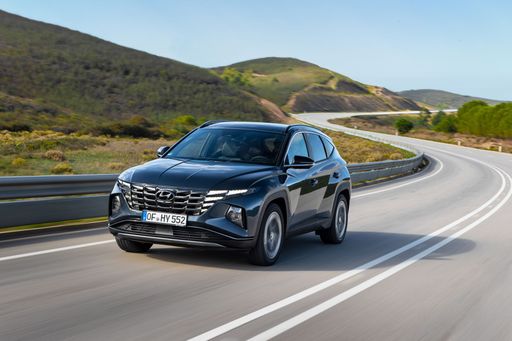 @ hyundai.news
@ hyundai.news
 @ hyundai.news
@ hyundai.news
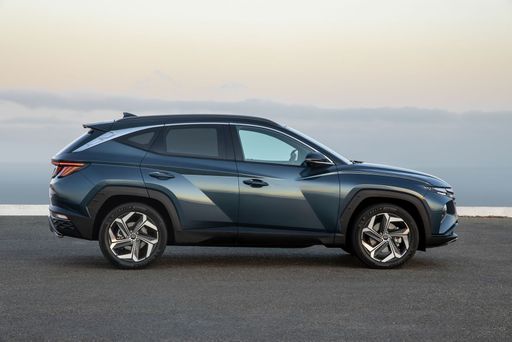 @ hyundai.news
@ hyundai.news
 @ hyundai.news
@ hyundai.news
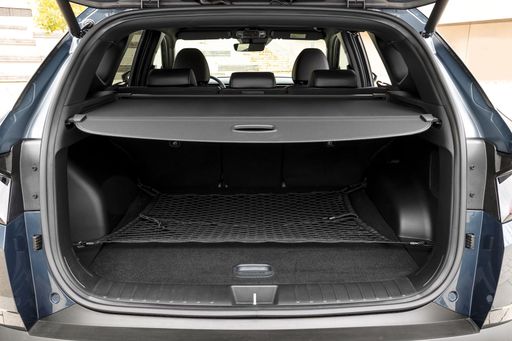 @ hyundai.news
@ hyundai.news
SsangYong Rexton
The SsangYong Rexton stands out in the SUV segment with its robust design and commanding presence on the road. It offers a spacious interior with high-quality materials, providing comfort and practicality for both driver and passengers. The Rexton combines off-road capability with modern technology, making it an attractive option for those seeking a versatile and durable vehicle.
details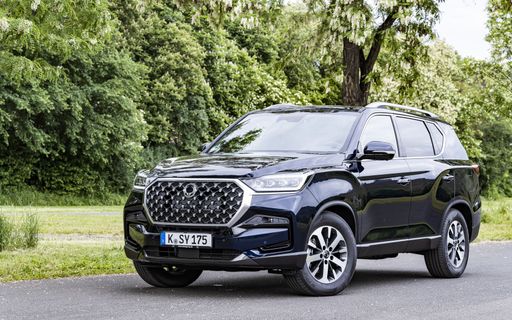 @ Ssangyong
@ Ssangyong
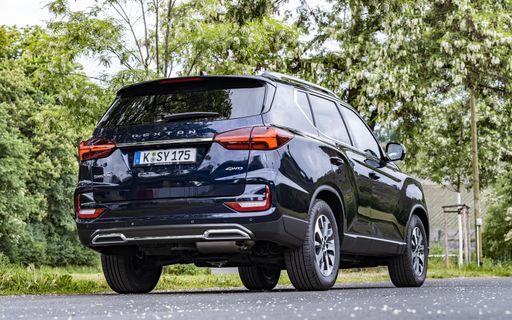 @ Ssangyong
@ Ssangyong
 @ Ssangyong
@ Ssangyong
 @ Ssangyong
@ Ssangyong
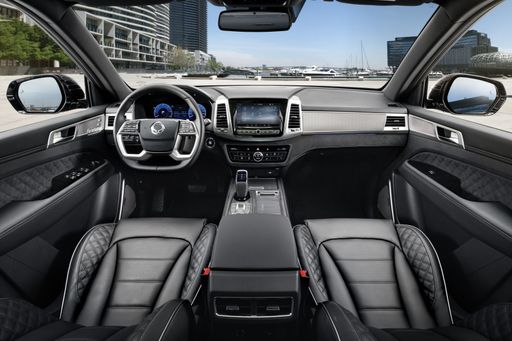 @ Ssangyong
@ Ssangyong

|

|
|
|
|
Costs and Consumption |
|
|---|---|
|
Price
30600 - 46300 £
|
Price
41100 - 51300 £
|
|
Consumption L/100km
1 - 6.9 L
|
Consumption L/100km
8.20 L
|
|
Consumption kWh/100km
-
|
Consumption kWh/100km
-
|
|
Electric Range
64 - 70 km
|
Electric Range
-
|
|
Battery Capacity
-
|
Battery Capacity
-
|
|
co2
22 - 156 g/km
|
co2
214 - 216 g/km
|
|
Fuel tank capacity
42 - 54 L
|
Fuel tank capacity
70 L
|
Dimensions and Body |
|
|---|---|
|
Body Type
SUV
|
Body Type
Off-Roader
|
|
Seats
5
|
Seats
5 - 7
|
|
Doors
5
|
Doors
5
|
|
Curb weight
1520 - 1889 kg
|
Curb weight
2145 - 2180 kg
|
|
Trunk capacity
546 - 620 L
|
Trunk capacity
236 - 784 L
|
|
Length
4510 - 4520 mm
|
Length
4850 mm
|
|
Width
1865 mm
|
Width
1960 mm
|
|
Height
1650 mm
|
Height
1825 mm
|
|
Max trunk capacity
1721 - 1799 L
|
Max trunk capacity
1806 - 1977 L
|
|
Payload
525 - 545 kg
|
Payload
655 - 770 kg
|
Engine and Performance |
|
|---|---|
|
Engine Type
Diesel MHEV, Petrol MHEV, Petrol, Full Hybrid, Plugin Hybrid
|
Engine Type
Diesel
|
|
Transmission
Automatic, Manuel
|
Transmission
Automatic
|
|
Transmission Detail
Dual-Clutch Automatic, Manual Gearbox, Automatic Gearbox
|
Transmission Detail
Automatic Gearbox
|
|
Drive Type
Front-Wheel Drive, All-Wheel Drive
|
Drive Type
All-Wheel Drive
|
|
Power HP
136 - 252 HP
|
Power HP
202 HP
|
|
Acceleration 0-100km/h
7.9 - 11.6 s
|
Acceleration 0-100km/h
10.60 s
|
|
Max Speed
180 - 194 km/h
|
Max Speed
184 km/h
|
|
Torque
265 - 367 Nm
|
Torque
441 Nm
|
|
Number of Cylinders
4
|
Number of Cylinders
4
|
|
Power kW
100 - 185 kW
|
Power kW
148 kW
|
|
Engine capacity
1598 cm3
|
Engine capacity
2157 cm3
|
General |
|
|---|---|
|
Model Year
2024
|
Model Year
2021 - 2023
|
|
CO2 Efficiency Class
E, F, D, B
|
CO2 Efficiency Class
G
|
|
Brand
Hyundai
|
Brand
SsangYong
|
What drive types are available for the Hyundai Tucson?
Available configurations include Front-Wheel Drive or All-Wheel Drive.
The prices and data displayed are estimates based on German list prices and may vary by country. This information is not legally binding.
